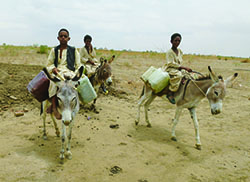Programmed robots choosing their targets on their own and killing them-in order to prevent this grim realization, AAR Japan has been working to ban Killer Robots.
From 12 to 16 December 2016, the 5th Review
Conference of the Convention on Certain Conventional Weapons (CCW) was held at
the UN in Geneva, Switzerland. As a steering committee member of the Campaign to Stop
Killer Robots, an international coalition of civil society, Natsuki
MATSUMOTO of AAR participated.
To prevent the possible tragedy
To prevent the possible tragedy
CCW
is a convention which consists of a main treaty and five additional protocols
that restrict the use of inhumane weapons, such as weapons with fragments undetectable by X-rays, landmines, booby traps, incendiary weapons,
blinding laser weapons, and weapons which may cause unexploded ordnance. In recent years, the possibility of restricting lethal autonomous
weapons systems(LAWS) is being argued, urged by civil societies led by the Campaign to
Stop Killer Robots. In this conference, the main focus was on whether we could
reach an agreement on setting a GGE (Group of Governmental Experts) in 2017. For 3 years since 2014, there was only
a one-week long informal session per year as an opportunity for each government to collectively discuss the issue. If GGE is organized, however, it would provide opportunities for longer official discussions, which will then encourage governmental talks and initiate a great step forward for the adoption of legally binding documents that would regulate the use of LAWS.
a one-week long informal session per year as an opportunity for each government to collectively discuss the issue. If GGE is organized, however, it would provide opportunities for longer official discussions, which will then encourage governmental talks and initiate a great step forward for the adoption of legally binding documents that would regulate the use of LAWS.
 |
|
89 countries and regions participated in the session
(16th Dec 2016)
|



















